The Future of Clinical Research: How Translation Technology is Revolutionizing Global Studies

Clinical research has significantly reduced drug development costs and advanced treatment of deadly diseases. Multilingual approaches are crucial in this field. Discover more about clinical research, its phases, and the role of translation technology in revolutionizing the same.
Understanding Clinical Research
Clinical research is about studying human health and diseases for better diagnosis, treatment, and prevention. It aims at getting practical applications of scientific studies for public health improvement. Clinical trials are an important aspect of clinical research. These are experiments conducted in various phases to test the effectiveness of a new drug or treatment. Usually, there are four phases in a clinical trial. The first one tastes for safety, the second is for efficacy, the third looks for effectiveness, and the last one is for testing long-term effects.
Translation Technology In The Field
Let’s understand in detail, how translation technology revolutionizes global studies, in the context of clinical research:
Enhanced Patient Recruitment and Retention
With more than 7000 languages globally, clinical researchers cannot obtain accurate information by conducting trials in merely one language. Translation services increase clinical trial participation and also help in finding reliable data. Also, the localization of data boosts participants’ trust and they communicate better.
Improved Data Accuracy and Integrity
Only 12% of adults in the United States have higher health literacy, affecting the validity of the data collected during clinical trials and studies. With professional translation services, where subject-matter experts make various attempts to simplify the results, data accuracy and integrity get better.
Compliance With Regulatory Requirements
Many countries have strong regulations making it mandatory for researchers to come up with translated consent forms and other documents. For instance, The European Medicines Agency (EMA) implemented regulation EU-CTR 536/2014 in 2022. This regulation requires pharmaceutical companies to provide a Plain Language Summary (PLS) for clinical trials in Europe. A PLS translates complex trial information into easily understandable language, avoiding medical jargon, and is written at a 6th to 8th-grade reading level.
Facilitation of Global Trails
Translation technology develops a broader global information network for clinical researchers. Language barriers during complex studies get eliminated and study materials are available in multiple languages. This also ensures the consistent application of study protocols and data collection methods at the global level.
Patient Understanding and Safety
Patient safety cannot be overlooked during clinical research. Translation technology enables researchers and participants to come to the same conclusions as both parties have access to the required information in specific languages. This also reduces participant withdrawal rate during new research studies.
Emerging Trends
The global healthcare translation service industry is expected to be US$ 805.7 million by 2032, witnessing a CAGR of 6.7%. Many emerging trends will follow:
Time-Consuming
Human translation is accurate and undergoes various rounds of editing, but it takes a lot of time. In cases where a client comes with a tighter deadline, larger projects become more challenging.
Cost
The ones who have budget constraints find it tough to cope with the prices of professionals. Overall project cost also gets affected if the client opts for human translation.
Subjectivity
Every translator has expertise in a specific niche and this sometimes acts as a hindrance. Clients aiming to achieve consistency among diverse projects look for other translation approaches.
Resource Intensive
Human translation for larger projects requires a balanced team of translators, researchers, subject matter experts, and communicators. In case the balance between these resources collides, the quality of the project automatically gets compromised.
AI Translation Approach
The second approach to translation is AI or machine translation, which uses software to convert one language into another. The machine translation market is projected to exceed $3 billion by 2027. Like the first one, it also comes with pros and cons.
Pros of AI Translation
Speed
One of the notable benefits of AI or machine translation is better speed. For larger projects with strict deadlines, this translation approach offers a quicker solution. However, there are content quality issues that follow.
Cost Effectiveness
The second benefit on our list is cost-effectiveness. AI translation is cheaper in comparison to human translation. For instance, translating 100,000 words using Google Translate costs around $20, whereas a human translator might charge around $10,000 or more for the same content.
Consistency
AI translation tools, if used effectively, maintain the consistency of the translation projects. If the algorithm and predetermined rules work well, the final content has the right placement of special terms without overlapping.
Scalability
AI translation tools can handle multiple language translations, making the projects scalable. It is apt for global businesses looking for localization.
Accessibility
AI translation tools are easily accessible and non-professionals can use them to understand basic translations. These tools provide an option for those without access to professional translation services.
Cons of AI Translation
The following are the cons of AI translation:
Accuracy and Reliability
AI-translated content often fails to meet the accuracy and reliability standards. Complex terminologies and sentences get poorly translated and the true meaning is lost. For example, Google Translate achieves only about 90-95% accuracy at its best, and lower for certain language pairs.
Cultural Sensitivity
The translation doesn’t match the cultural sensitivity levels of human translators. Projects, where deeper cultural insights are required in the content, do not get along with these translation tools.
Handling Specialized Content
Handling specialized content requires a creative approach which is not possible with AI translation tools. Industry-specific content projects often prioritize human translators for managing original intent and flair.
Security Concerns
AI translation tools may share sensitive information with third parties. This raises security concerns, especially in cases of using newly launched tools.
The Right Translation Approach
The translation industry is advancing, favoring a blend of human and AI translation. Each method has unique strengths and weaknesses, suitable for different projects. For example, medical documents often need human precision, while marketing materials can benefit from AI efficiency. Leading translation services like Datagain Translation employ a hybrid approach, merging machine translation with human post-editing, delivering cost-effective and high-quality translations tailored to client needs.

